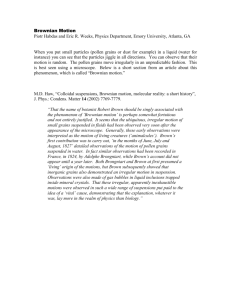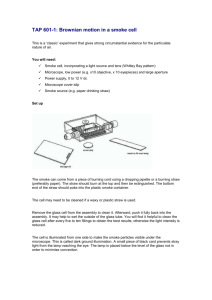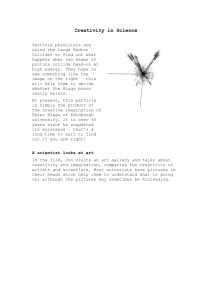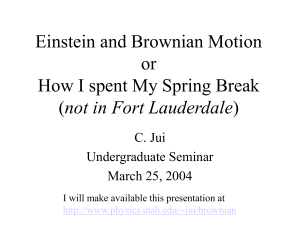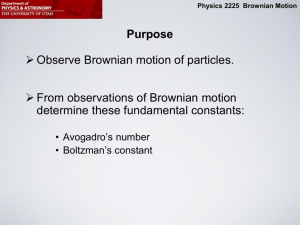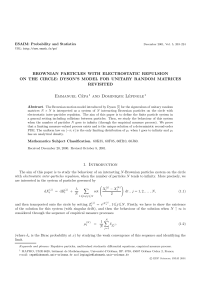student notes - science
advertisement
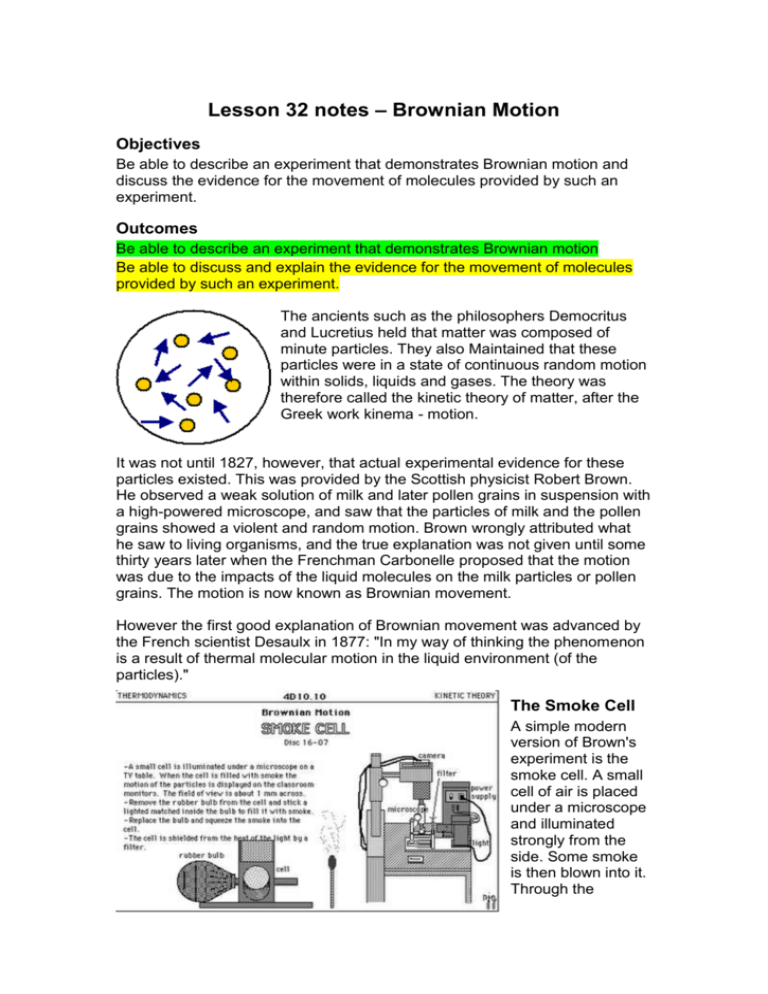
Lesson 32 notes – Brownian Motion Objectives Be able to describe an experiment that demonstrates Brownian motion and discuss the evidence for the movement of molecules provided by such an experiment. Outcomes Be able to describe an experiment that demonstrates Brownian motion Be able to discuss and explain the evidence for the movement of molecules provided by such an experiment. The ancients such as the philosophers Democritus and Lucretius held that matter was composed of minute particles. They also Maintained that these particles were in a state of continuous random motion within solids, liquids and gases. The theory was therefore called the kinetic theory of matter, after the Greek work kinema - motion. It was not until 1827, however, that actual experimental evidence for these particles existed. This was provided by the Scottish physicist Robert Brown. He observed a weak solution of milk and later pollen grains in suspension with a high-powered microscope, and saw that the particles of milk and the pollen grains showed a violent and random motion. Brown wrongly attributed what he saw to living organisms, and the true explanation was not given until some thirty years later when the Frenchman Carbonelle proposed that the motion was due to the impacts of the liquid molecules on the milk particles or pollen grains. The motion is now known as Brownian movement. However the first good explanation of Brownian movement was advanced by the French scientist Desaulx in 1877: "In my way of thinking the phenomenon is a result of thermal molecular motion in the liquid environment (of the particles)." The Smoke Cell A simple modern version of Brown's experiment is the smoke cell. A small cell of air is placed under a microscope and illuminated strongly from the side. Some smoke is then blown into it. Through the microscope the particles of smoke can be seen to be in violent random motion just like Brown's pollen grains. This motion is due to the collisions of the (invisible) air molecules with the much larger particles of smoke. Heating the cell makes the smoke particles' motion even more violent due to the increased velocity of the air molecules.


